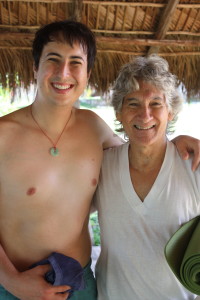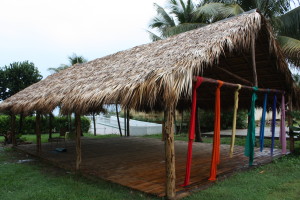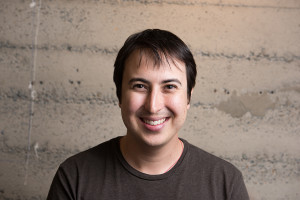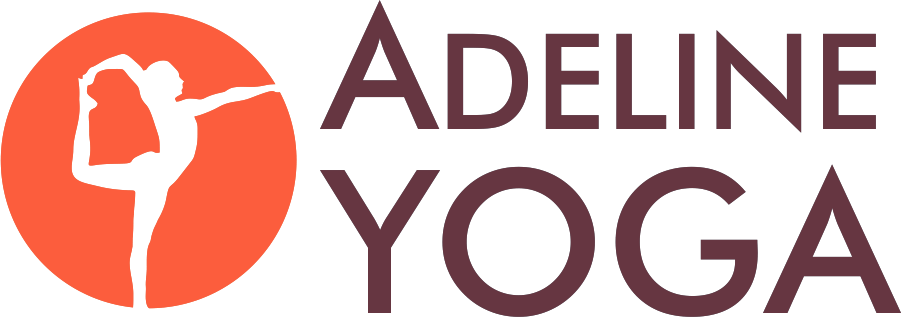 In 2005, Canadian flight attendant Christine Dahdouh made a call that would forever alter her path. She had recently travelled to Cuba, a place that she found grounded her when she wasn’t in the air. What Christine needed now was a place to practice yoga. The name Eduardo Pimentel kept surfacing so she found his contact information and called. Not long into the conversation, she asked if she could study with him. He said he was booked until 2014.
In 2005, Canadian flight attendant Christine Dahdouh made a call that would forever alter her path. She had recently travelled to Cuba, a place that she found grounded her when she wasn’t in the air. What Christine needed now was a place to practice yoga. The name Eduardo Pimentel kept surfacing so she found his contact information and called. Not long into the conversation, she asked if she could study with him. He said he was booked until 2014.
“Just kidding,” he chuckled. “Why don’t you come over now?”
Aside from his mischievous charm, what’s so striking about Eduardo is just how frequently he inspires others to embark on exciting new chapters in their own lives. For example after meeting Eduardo, Christine (known by friends as Coco) co-founded MHAI Yoga, which runs retreats in Cuba where hundreds of local and international yogis have practiced together.
Yoga in Cuba is inextricably linked to Eduardo, who’s widely credited for introducing it to the island. But before yoga, there was his first love: chess. A champion player, Eduardo began to notice that his fierce, competitive spirit eroded his capacity for compassion and ability to focus. Nothing quite countered that effect, until he discovered yoga in the early 70s. One day, while at the library, he found B.K.S. Iyengar’s Light on Yoga, a guide that truly resonated with him.
Eduardo copied all the pages of Light on Yoga by hand and began to teach himself. Iyengar yoga required him to be precise and present with his body. The energy that he had channeled to his chess opponents, he now directed to himself. As he developed his practice, others noticed, having heard of or seen him do yoga in public places. Gradually, people began to ask if he’d teach them. He admitted that he was still learning, but welcomed all who wanted to join him.
Up until the late 80s, the Cuban government disallowed acts of unauthorized congregation, seeing informal gatherings as dangerous. As Eduardo’s group of yogis grew, he was deemed an anti-revolutionary. His following was disbanded, his books were confiscated and he was arrested. Eduardo continued to practice until he was released. Once let go, he reconvened his group of Cuban yogis and began reaching out to the international yoga community.
As part of his outreach, Eduardo began to write B.K.S Iyengar, a correspondence that would last 15 years before the two would meet for the first time in Pune, India. As Eduardo deepened his practice and developed his teaching, he’d send letters to B.K.S. inquiring about nuances of specific asanas, waiting up to four months for a response to return to him by ship.
 The collapse of the Soviet Union in 1991 brought wide-sweeping change to Cuba, due to its economic and political ties with the USSR. While Cuba resettled, Eduardo took the opportunity to work with the government to redefine its view on yoga. As an advisor to the Department of Health, Eduardo helped re-frame yoga in terms of healthcare by classifying it with acupuncture, massage and tai chi, which are considered alternative options to medicine.
The collapse of the Soviet Union in 1991 brought wide-sweeping change to Cuba, due to its economic and political ties with the USSR. While Cuba resettled, Eduardo took the opportunity to work with the government to redefine its view on yoga. As an advisor to the Department of Health, Eduardo helped re-frame yoga in terms of healthcare by classifying it with acupuncture, massage and tai chi, which are considered alternative options to medicine.
Indeed, many Cubans today see yoga as a way to reduce stress and sustain mental health, especially during tumultuous and difficult times. One of Eduardo’s students had a neurological problem that prevented her from her gym routine, her preferred and necessary outlet. After a friend brought her a mat from abroad, she took up yoga with Eduardo. Over the last five years, it’s brought her peace — both mentally and physically — and community. During a recent “Yoga Day,” she found herself one of hundreds of Cuban yogis practicing in a public park.
 Eduardo continues to lead and strengthen the yoga community in Cuba to this day. While there’s a long list of places he’s visited and posts he’s held in support of yoga, Eduardo seems most driven to develop the Cuban yoga community and share his blend of Iyengar- and Hatha-style yoga. He’s developed over two dozen yoga instructors, who have completed over 300 hours of training each under his tutelage. Together, Eduardo and his teachers work with over 12,000 students across 14 of Cuba’s 16 provinces. Every month, he visits one of his junior teachers, distributing spare pune belts or blocks that he’s received from yogis from abroad. Though there aren’t enough supplies to go around, he’s inspired by resilient and resourceful Cuban yogis, who make mats out of flattened cardboard boxes and belts with ropes.
Eduardo continues to lead and strengthen the yoga community in Cuba to this day. While there’s a long list of places he’s visited and posts he’s held in support of yoga, Eduardo seems most driven to develop the Cuban yoga community and share his blend of Iyengar- and Hatha-style yoga. He’s developed over two dozen yoga instructors, who have completed over 300 hours of training each under his tutelage. Together, Eduardo and his teachers work with over 12,000 students across 14 of Cuba’s 16 provinces. Every month, he visits one of his junior teachers, distributing spare pune belts or blocks that he’s received from yogis from abroad. Though there aren’t enough supplies to go around, he’s inspired by resilient and resourceful Cuban yogis, who make mats out of flattened cardboard boxes and belts with ropes.
Yoga is alive and well in Cuba. The community exists and is thriving. What Eduardo, Coco and Cuban yogis hope for is a true exchange with their peers. More than ever, there’s a global movement around yoga and a distinct Cuban contribution to be added to the canon. That is why, even with three books already under his belt, Eduardo is now writing two more: one about ‘the matrix’ of yoga, which explores the interconnected networks of yogis, and another on his interpretation of the Bhagavad Gita, complete with annotations that offer a Cuban context. In addition to working with Coco to grow MHAI Yoga, Eduardo is raising funds to build a commercial yoga space for all to practice, now that the government regulation allows it.
 Despite his push to build and grow yoga in various ways in Cuba, Eduardo never forgets that his deepest joy and growth springs from his own practice. “There’s a type of elk that is most happy when it smells a specific scent. The thing it does not know is that its glands produce the very scent it seeks,” he says. “Every time the scent is made, the elk scours the forest for it, smelling it everywhere it goes, but finding it nowhere. If only he knew it was within him all along.”
Despite his push to build and grow yoga in various ways in Cuba, Eduardo never forgets that his deepest joy and growth springs from his own practice. “There’s a type of elk that is most happy when it smells a specific scent. The thing it does not know is that its glands produce the very scent it seeks,” he says. “Every time the scent is made, the elk scours the forest for it, smelling it everywhere it goes, but finding it nowhere. If only he knew it was within him all along.”
Shaun Young

When Shaun Young isn’t a student at Adeline Yoga, he’s editing and writing for the First Round Review. Recently, his wife and he traveled to Cuba. This is what he learned about the country’s history, people and yoga community through the lens of the man who brought yoga to the island.

Rebecca says
Wow, intriguing article. Motivates me to go to Cuba… Well done